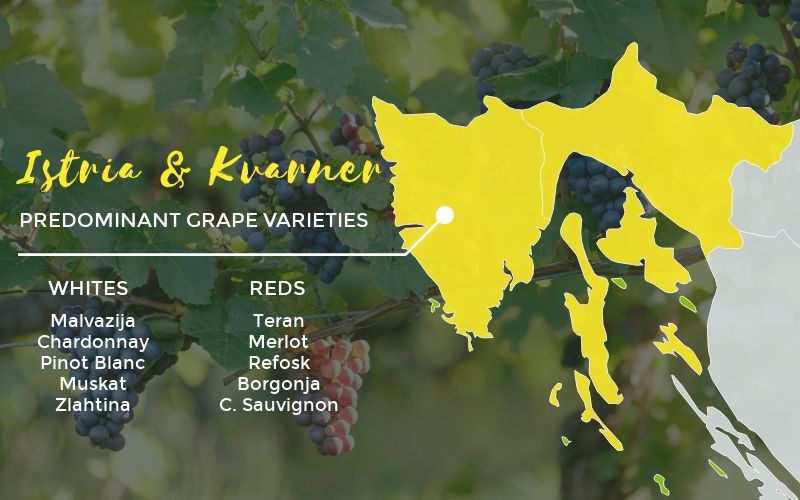January 3, 2019 — In the first article of the Croatian Wine Regions series, TCN unveils Istria and Kvarner, Croatia’s westernmost region.
Istria is one of the oldest winegrowing regions in Europe, as the first vines were introduced to the region by the Greeks as early as the 6th century BCE. Today, with just a little over 6,000 hectares under vineyards, Istria carries the moniker “Croatian Tuscany” and is home to a diverse range of high-quality wines.
Wine production in Istria took a full turn in the early 1990s when new generations of winemakers started reinvigorating their family vineyards. Liberated from the socialist-era command economy in which winegrowers were basically coerced to sell their grapes to the state-controlled cooperatives, these new generations of independent winemakers could now focus on quality rather than quantity.
Blessed with the region’s exceptional terroir, Istrian producers are nowadays equally championing indigenous as well as international varieties.
In terms of climate, Istria gets the best of both the Mediterranean and mild continental climate. Think palm trees covered in snow — that’s Istrian peninsula in a nutshell. While summer heat is tempered by sea breezes from the Adriatic, another key factor is the closeness of the Dinaric Alps, and let’s not forget to mention the heterogeneity of Istrian soil.
The terracotta-colored crljenica (red clay soil) is found in coastal areas; it is rich in iron and mainly reserved for growing red varieties, though it can also produce full-bodied and well-structured whites. The central part of the peninsula is known as the “grey Istria” because of its flysch soil (sedimentary rock with grey clay rich in limestone) which is most suitable for white varieties. And last but not least, the rolling hills of inland Istria are characterized by even more limestone, and vineyards in these areas produce aromatic, elegant wines with higher levels of acidity.

Malvazija Istarska represents 70% of the entire production; it is the most widespread white grape variety in the region, followed by Chardonnay. Other whites include Muškat, Pinot Blanc, Pinot Grigio, and Sauvignon Blanc. As for the reds, if Malvazija is the queen of whites, then Teran is the absolute king of Istrian red wines, although Merlot is actually the most widespread variety. Some critics have even said that Istria could quite possibly be the world’s second-best Merlot terroir after Bordeaux, its homeland. Other notable mentions include Refošk, Borgonja and Cabernet Sauvignon, but also Cabernet Franc, Hrvatica, Barbera, and Pinot Noir.
The neighboring Kvarner region, and in particular the island of Krk, are most notable for being home to Vrbnička Žlahtina. The name of this popular white grape variety comes from the fertile plains northwest from the town of Vrbnik, and the old Slavic word zlahten, which means “noble.” Žlahtina is indigenous to Krk, and it is by far the island’s most planted variety that produces light, fruity wines which are best consumed young.
Stay tuned for more on Croatian wine regions by following TCN’s dedicated gourmet page.










